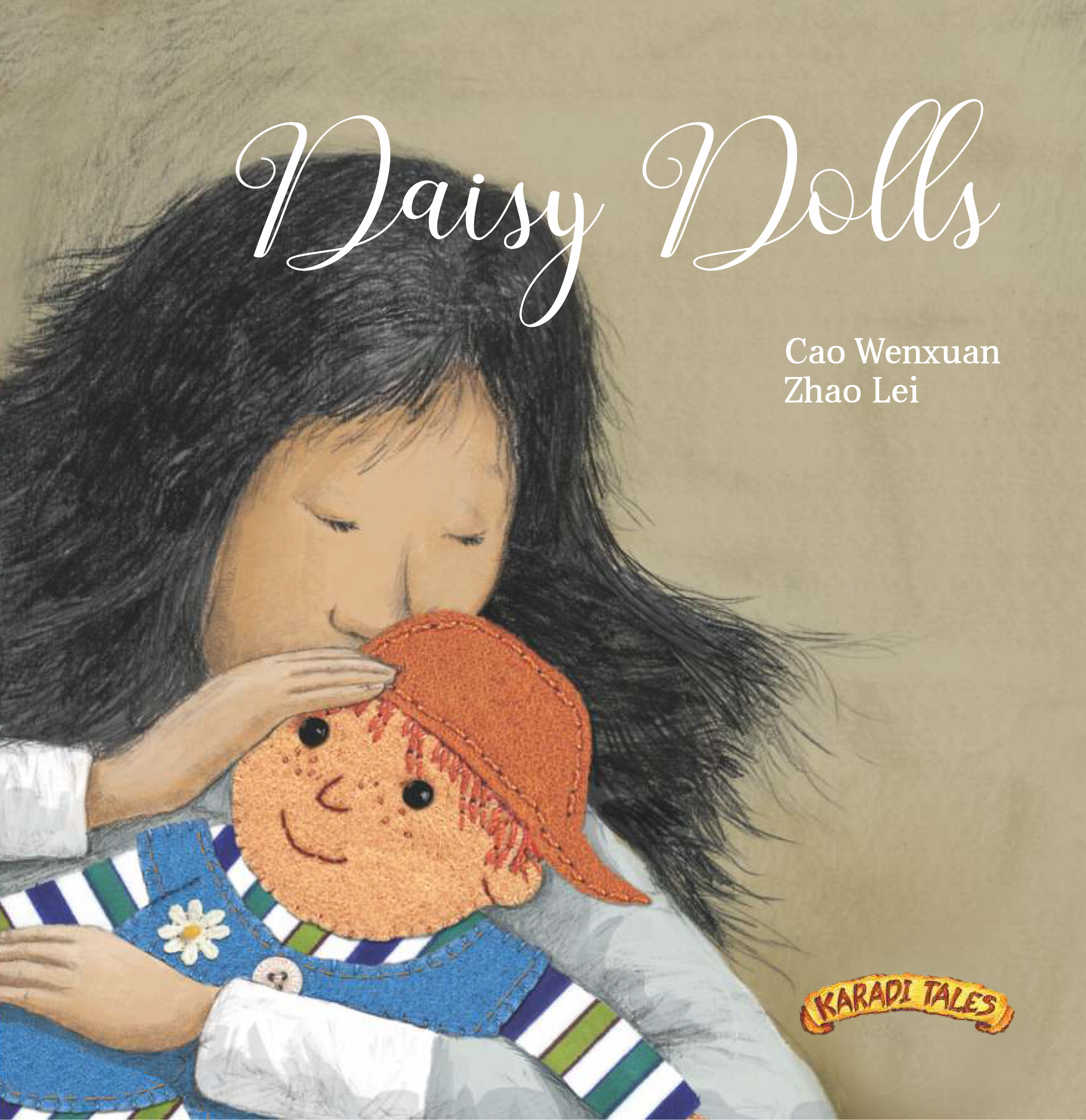Daisy Dolls: Book Review
Advaita Manikkath is an editorial intern at Karadi Tales. This is her review of Daisy Dolls, written by the famous Chinese author Cao Wenxuan, illustrated by Zhao Lei.

Daisy Dolls by Cao Wenxuan is one of the gentlest stories I’ve read in a long while. Brimming with heart and love, the story, softly lyrical, takes you through the life of Hua, a dollmaker in a little town in China. Wenxuan’s writing of Hua is as delicate and filled with tenderness as Hua’s dolls are – something that immediately endears you to both author and character. Nature and our different understandings of it are carefully and poignantly explored in this book – in the beautiful sweeping descriptions of Hua’s birth in a daisy field, in the idea of maternal love beyond the traditional in the case of Hua and her dolls and in how the book deals with the natural conclusion to all life – death. Daisy Dolls tackles these heavy, often melancholic themes without glossing over the underlying reality of them. Wenxuan does this by equating the daisies with love and happiness, making it a symbol of all the warm fuzzy feelings that you feel when you are safe and loved and cared for.
When the last page fills up with the dolls – all of them adorned with a small daisy – in what could have been a very sad moment in the book, you are given something happy to hold onto and take away.
Reading a beautifully written and illustrated children’s book is life-affirming and Daisy Dolls is exactly that. Coupled with Zhao Lei’s serene, clean-lined illustrations that have no frills (except maybe for the ones stitched onto dolls), the images complement the words perfectly. The patchwork, always happy-looking dolls make them stand out as a focal point on each page.
Daisy Dolls was also my introduction to the rest of Wenxuan’s writing. After reading it, I felt compelled to look into a few of his other stories – Feather, Crows and A Very Special Pigeon to name a few – and in them found the same leisurely and captivating storytelling. Wenxuan, often referred to as China’s Hans Christian Andersen, uses writing that feels dainty and effortless even while writing the only point of friction in the story when Hua throws her walking stick at the window to break it and cause a commotion. The scene is jarring in an otherwise calm sailing story and does exactly what it means to do so well that you pause, read it again, and continue on towards a climax that would make even the most cold-hearted tear up. A little familiarity with Wenxuan’s other work and you realize that this is a recurring pattern in all of his writing – this mix of delicate, comforting prose that tricks you into a calm that is suddenly jolted. Lei’s illustrations temper the book exactly right, never intruding but always adding to the experience of the reading. Wenxuan’s stories are not just for children – not at all – and reminded me of something Maurice Sendak once said – that he just writes books and that other people tell him it’s for children. Daisy Dolls is a story I would certainly re-visit – for the writing, for the illustrations, but most definitely for how it makes me feel – like I’m saying hello again to a good old friend.





